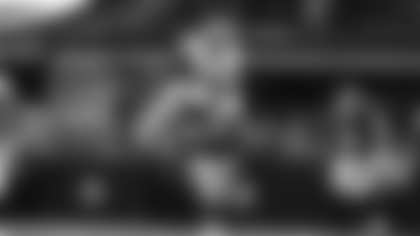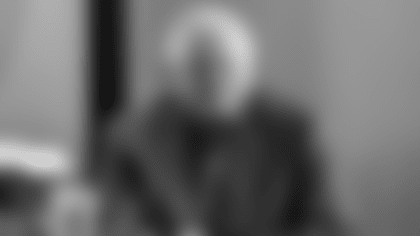As I mentioned in last week's articles on possible **changes in the NFC East**, I make predictions primarily by determining how much luck (or lack of it) a team or player experienced in a given season. Over the long run, that luck evens out such that unlucky teams get luckier, and vice versa. That doesn't mean that everything that occurs in the NFL is due to luck, far from it, but things are probably a bit more random than we'd like to think.
Below, I've listed three stats that are either unrepresentative of the Cowboys' true talent or due to fluky occurrences (and thus likely to improve in 2013). This won't be your typical list of reasons for improvement – most analysts wouldn't argue that ranking near the bottom of the NFL is a good thing – but they're all areas in which improvement, perhaps even significant improvement, is very likely. That makes them reasons to be optimistic moving forward.
The running game ranked 30th in the NFL in rushing efficiency.
The Cowboys were really bad on the ground in 2012, and that's obviously a problem. While I don't advocate a run-heavy approach or offensive balance in the traditional manner, Dallas really needs to improve their rushing efficiency. With just 3.6 yards per carry (YPC), only San Diego and Arizona were worse.
However, the 'Boys actually ranked 18th in the NFL in rushing success rate. "Success rate" measures how many plays increase an offense's probability of scoring, and 40.2 percent of the Cowboys' runs did that (compared to 52.8 percent of their passes). Success rate is a better metric to judge team rushing strength because it accounts for game situations; on a 2-yard run on third-and-1, for example, an offense's success rate would improve while their YPC would actually decrease, despite the play being successful.
The high success rate suggests Dallas typically runs the ball in a lot of short-yardage and low-upside situations in which their YPC would naturally be low. That's a good thing to do. So while there's no doubt that the Cowboys need to get better up front, they actually aren't quite as bad as we make them out to be. It wouldn't be a stretch to see them jump back up to the league average of 4.3 YPC in 2013, or perhaps even higher.
Tony Romo threw 19 interceptions.
Romo's 19 interceptions led the league and tied a career-high. Some take it as a sign that Romo is slipping, but there's almost no chance that he matches that total again in 2013. For one, Romo threw 648 times in 2012 – 98 more attempts than his previous high. Second, he tossed a pick on 2.9 percent of his passes. That's slightly higher than his career average, but it's significantly greater than the 2.0 percent interception rate that Romo posted in the previous three seasons.
Romo's interceptions had been trending downward prior to 2012, a season in which game situations really affected his decision-making. He definitely threw some poor interceptions, but he also had games like the Monday night matchup with the Chicago Bears – a five-interception performance – in which he purposely attempted a lot of risky passes in order to attempt a comeback. Whereas many quarterbacks would play conservatively to preserve their stats, Romo has always implemented a high-variance strategy to maximize the Cowboys' win probability. That means that, assuming the Cowboys aren't losing so frequently in 2013, a reasonable assumption, Romo won't be in a position to attempt so many passes with the potential of getting intercepted.
The defense had the third-lowest turnover rate in the NFL. [embedded_ad]
There's no area in which the Cowboys are more likely to improve than in the defensive takeaway department. Dallas forced a turnover on only 8.0 percent of opponents' drives in 2012, the third-worst mark in the NFL, which included a league-low seven interceptions. While some teams are better than others at generating takeaways, the stat is still extremely unstable from year to year. Fumble recoveries in particular have basically no carryover from season to season, meaning every team is likely to end up somewhere near the league average when it comes to recovering fumbles.
In addition to simple luck, the Cowboys will also be in a new scheme that should be more conducive to forcing turnovers. They'll presumably play a lot more zone coverage under Monte Kiffin, allowing the talented cornerbacks to read the quarterback and make plays on the football. But even if the defense doesn't make significant improvements in 2013, they'll still be heavy favorites to secure more takeaways from a reversal of luck alone, and that's going to help the team more than anything else.















